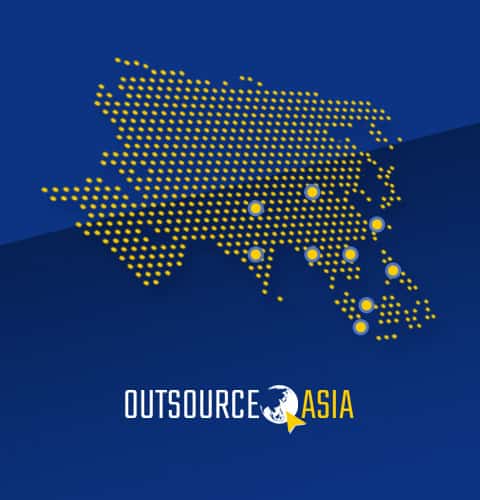
The Future of Work in Vietnam
This article on the future of work in Vietnam examines aspects of the post-pandemic era, ranging from the overall status of the local labor market up to the long-term influence on consumer consumption and business recovery. See how organizations respond towards the impact of automation and technology on job availability and employment growth in the new normal. There is also assessment on commitment to gender equality, diversity, and inclusion as well as decisions by policymakers and business leaders on aspects of cybersecurity management and data and privacy protection.
Status of Local Labor Market
Vietnam’s labor force accounts for 57% of the country’s population of approximately 96 million people. The three largest industries with significant contributions to the Gross Domestic Product (GDP) are services (51%), manufacturing (16%), and agriculture (14%). The workforce is concentrated in areas of Hanoi region, Hai Phong, Da Nang and Ho Chi Minh City. The northern province of Nghe An has also gotten a lot of attention in recent years from local and international investors.
In 2021, Vietnam saw a significant shift in recruiting demand and labor force mobility. According to the General Statistics Office, the pandemic resulted in a 3 million reduction in domestic workers by Q3 2021. More than 1.4 million Vietnamese were unemployed due to the worst-ever fourth wave of COVID-19 infections. Monthly income averaged $232 (5.3 million VND) which is down $27.43 (624,000 VND) year-on-year. At the end of 2019, the unemployment rate was 2.1%. By Q1 2021, the unemployment rate increased to 2.4 %.
The workforce in Vietnam’s food and beverage, lodging, and tourist industries has been steadily declining. Because of company personnel reductions, workers in this profession have lost their employment. Employee earnings have declined by around 18%, according to the International Labor Organization (ILO). In addition, supply chain interruptions, lower sales orders, and issues paying warehousing expenses monthly reduced demand for employees in the manufacturing and processing consumer products industries.
“The fourth wave of COVID-19 infections have seriously affected the labor market, with a high unemployment rate,” said Prime Minister Pham Minh Chinh. He revealed that when travel limitations were relaxed, a large exodus of workers from industrial centers to their hometowns created issues for companies and hindered viral control efforts.
Consumer Consumption and Business Recovery
Vietnam has been a consistent outperformer in Asia, thanks to ongoing investments in its manufacturing sector, active foreign direct investment, and improving productivity. Over the last 20 years, GDP has grown at a compound annual rate of 5% in real terms, which is 1.7 times higher than the world average.
Consumer attitude has remained favorable as a result of Vietnam’s relatively successful attempts to combat the pandemic. The Vietnamese customer’s tenacity creates generally favorable conditions for consumer enterprises to succeed in the medium to long term.
Changes in Vietnamese consumer spending show a shift in priorities away from discretionary spending and toward necessity. However, quality and brand qualities, rather than price, continue to govern their purchasing decisions. These trends are in line with the general trend of consumers trading up in recent years, as they seek higher-quality alternatives as their income levels rise.
From a consumer standpoint, the pandemic has likely expedited numerous digital behaviors and spurred wider use of e-commerce. As a result, many consumer brands have shifted their investments to digital platforms and made substantial efforts to change their route-to-market strategies to take advantage of the new trend.
Although urbanization and the expanding middle class are important drivers of Vietnam’s economy, a new chapter is being written that goes beyond scale and rising wages. Significant demographic change and the spread of digital technologies are projected to amplify the variety of Vietnam’s consumer markets, resulting in sometimes unexpected shifts in consumer tastes and behavior.
Digital ecosystems are combining several consumer requirements and supplying them with varied degrees of integration. For example, super apps provide users with a one-stop digital store with various purposes, features, and additional services. Players in consumer-packaged goods (CPGs) and retail have had to reassess their approach on partnerships as consumer-facing ecosystems have arisen and grown rapidly.
To succeed in Vietnam’s consumer markets, businesses must consider the following trends, which reflect the country’s changing socio-economic realities and will influence consumption: shrinking households, increased spending by seniors, increased market participation by digital natives, women’s economic empowerment, and a wider geographic distribution of spending.
Commitment to Gender Equality, Diversity, and Inclusion
Because of the global campaign for gender equality, Vietnam’s gender gaps have come under attention in recent years. Inequalities remain despite the country’s success in closing the gender gap in education and labor participation. Recognizing this trend, the Vietnamese government recently updated its Labor Code, confirming its commitment to achieve gender parity through changes that promote gender equality. Gender equality in the workplace is a goal of the amended Labor Code. In 2019, Vietnam revised its labor code, which will take effect in 2021. Here are five of the policies it proposes to boost gender equality in the workplace in Vietnam.
- To maintain the payment of equal wages for work of equal value
- To give women the right to choose an occupation suitable for them
- To grant male employees paid paternity leave
- To protect female workers against discrimination based on marital status, pregnancy, disability, and more
- To ensure justice for victims, including any form of physical, verbal, or non-verbal sexual harassment in all work-related locations
In terms of workplace diversity and inclusion, Vietnam has still a long way to go. Surveys report high levels of physical violence, verbal abuse, and sexual harassment in the workplace. More than 65% of persons with disabilities said they are either denied opportunities for job interviews or not considered for the role because of their disability. An average of 30% of LGBT are also being denied employment based on sexual orientation and gender identity. Moreover, the desire to change jobs among LGBT workers who have not come out is also 3 times higher than the number of LGBT people who are openly safe in the workplace.
According to Đào Xuân Lai, UNDP’s Assistant Resident Representative in Việt Nam, “For continued economic growth, it is crucial to fully embrace this new way of doing business, which will also help and reduce inequalities for vulnerable groups.”
Learn more about how Outsource Asia can help your organization embrace the future of work.


